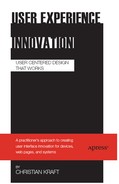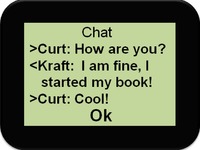Approaches to Identifying Needs
Assuming you already have a good understanding of who your target users are, which you should have from Chapter 3, the next step is to identify the needs of these users. There are many well-documented methods for identifying the needs of your target users; I will go through some of these methods in the sections to follow.
Finding Specific Target Users
Finding target users may sometimes be a little bit tricky. For example, if you are looking for tweens in your own market area, you can probably easily find some simply by walking the streets near your office or home. If your target users are people interested in butterflies from southern Borneo, you may want to try searching the Internet for potential existing butterfly or insect communities. If you are looking for tweens also interested in butterflies from southern Borneo, you are probably defining your target group to be too narrow.
If you are designing a product similar to what you already have on the market, you can look in your current database of customers, and you can browse through your consumer complaint database if you have one, or ask some colleagues working with customer feedback on a daily basis.
In some situations where you are looking for very specific user profiles, you may want to ask an agency to find suitable target users for you. Asking these agencies purely for names and addresses of specific types of users usually does not cost a fortune.
If you are targeting users that you have not been in contact with before, you may get more inspiration from Chapter 15, where I will go through the entire user experience innovation process for a product targeted at a new user group.
Contacting Target Users
The next step is to make initial contact with your target users. This can be done via e-mail or telephone, or by spotting them on the street. You will often be very surprised at how willing users will be to help you. They may sometimes happily take time off from their job to meet up with you for a few hours. You can contact some of your target users and ask them in for a session, or simply interview them via phone. E-mail interviews and web surveys may also be options, but—as mentioned later—these methods are less reliable.
Talking to Your Target Users
Talking to your target users may sound so obvious that it is not worth mentioning. However, you'd be surprised at the number of companies that omit this step. It is vital to actually talk to your target users.
Many companies do not even use existing feedback channels when they create new innovation. Most companies already have several ways to relate to their end users, such as e-mail inquiries and complaints, help lines, and so on, but these media are in many cases only used to give relief to users' frustrations. They are seldom used in the innovation process.
Don't fall into the trap of thinking that you must hire a research company to perform extensive and expensive market research. Doing so may be fruitful for larger companies. But if your resources are sparse, you can do research yourself very easily. Finding user insights is in my mind the absolute most prominent source of successful user experience innovation, so you certainly don't want to leave out the vital task of actually talking to your target audience.
In the following sections I will go through some of the methods of determining end-user needs that I personally have found most fruitful for sparking great innovations.
Interviewing Users or Potential Users
As indicated, talking to your users or potential users is essential. An alternative is a more formal way of interviewing people about their use of your product. This can bring you a number of insights and alert you to end-user needs. Interviewing people will sometimes automatically make the people more positive. It is very difficult for users to express negative elements of your product when interviewed, especially if you use a video or sound recorder. You see the same thing when a person from a political party interviews or questions people on the street.
The trick is to read behind the person, and to read what the person really means. They may tell you initially that your product is the best in the world, but try to listen to what they say after that. For example, they might say, “I love your product, but when I need to create a calendar reminder, I have some difficulties.” The trick is to listen to everything that comes after the “but.” You should also try to understand the basic needs of the person. This is usually where you will find true sources for later innovation around the user experience. If a person says to you that they love your product, but that they care more about the safety of their family, maybe the last part is where you should pay attention.
You can stop and interview people on the street, you can e-mail some of your users from your existing customer base, you can invite some specific users to a workshop, you can do web surveys, and you can interview people in their homes (see Figure 4-4).

Figure 4-4. Example of interviewing a target users in their home
Which method to choose may depend on the product that you are designing, and it will depend on the target users. Here are some examples:
If you are designing a TV remote control, you might want to interview people in their homes so that they can show how they usually use your device in the place where they use it.
- If you are designing a web page, service, or device for physically challenged users, you will likewise want to visit them in the place where they use your product.
- If you are designing a web page for teenagers, you may want to visit the teenagers in their rooms, in an Internet café, or wherever they most typically would use your product.
- If you are designing a mobile phone, asking people on the street may be suitable if the scope of your innovation is something that they would use when walking on the street.
The method you use for your interviews is for your discretion and judgement based on the product you are designing. But keep in mind that the goal of your interview is to find existing or latent needs.
Anecdote
Empathic Design
Emphatic design is a variation of user observation. With this technique, you as the observer look for underlying feelings to identify latent user needs.1 In many ways, empathic design is a matter of how you observe users. It takes some practice to see beyond the obvious user needs to the latent needs, but with a little bit of practice most people can do it. Alternatively, you may want to use a professional user experience expert to help you out.
When you start learning to see latent needs, you will automatically start to see latent needs when you observe people in public—on trains, buses, the street, and other places. You will be surprised about what insights and latent user needs you can find this way.
Anecdote
Market Research
Market research is basically no different from stopping and interviewing users on the street. However, you may not have time to interview hundreds of users and generate statistical data based on the interviews. You also may not have the same experience in interviewing users as professional agencies have. Finally, you may not have the time to do it yourself.
In this case, having professional market research done may be an option. It will surely cost you more money, but you may in return get data that is more precise, better documented, and covers more users than what you could have generated yourself. Interviewing random people on the street may give you very good inspiration for what a specific user wants, but market research may give you much more precise data about the users you are targeting.
___________
2 See, e.g., patent US6915138
Market research can provide you with more precise data about the needs of your target users, but it may take longer, and it won't give you the hands-on experience that in itself can be a great source of inspiration for user experience innovation.
![]() Note If you already have good market research data, I still recommend trying out, for example, simple street interviews—not because the experience of interviewing people on the street will necessarily give you better data, but because it is a great source of innovation.
Note If you already have good market research data, I still recommend trying out, for example, simple street interviews—not because the experience of interviewing people on the street will necessarily give you better data, but because it is a great source of innovation.
A Day in the Life
If the product that you are designing will have many contact points with the user during a day, you may choose a day-in-the-life method (Figure 4-6). This is a practical approach in which you interview target users about a typical day in their life, and you can learn when and why they might choose your product to accomplish some of their daily tasks. You may also choose to follow a user throughout an entire day and simply take notes.

Figure 4-6. A day-in-the-life example
This approach may be applicable to social web pages, certain software programs such as word processors and e-mail clients, mobile phones, remote controls, and so forth. If your product does not naturally have many contact points during a day, you might change this to a week-in-the-life or a month-in-the-life exercise.
Not only will this exercise provide you with specific, immediate end-user needs for your product, but it may also provide you with indirectly expressed latent user needs. If you can convince the user to let you take photos during the day, you will get a lot of concrete footage and inspiration for the succeeding innovation work.
Furthermore, this exercise may give you indications of the what the user's core tasks are (see Chapter 5), as well as the current pain points that the user is experiencing (see Chapter 9).
User-Created Diaries
Another approach to finding user needs is to ask target users to create diaries about their life, and about how, when, and where they use your product (see Figure 4-7).

Figure 4-7. User-created diaries
Several agencies specialize in finding users that match your target user group. These users are more than willing to create loads of diary material—and hence end-user needs—for a relatively small sum of money. In some cases, giving these users one of your products may be enough.
![]() Note Remember that if you have customers that truly like your product already, these customers may be willing to go a long way for you. Use that. And use their expertise.
Note Remember that if you have customers that truly like your product already, these customers may be willing to go a long way for you. Use that. And use their expertise.
Lead User Workshops
Most of the target users for your product will have difficulties expressing their needs for your product. And a vast majority of your target users will certainly not be able to come up with the innovations themselves. There will always be some users who are exceptions, though—those who are leaders and trend setters. These are the lead users of your product, and they are the ones you should seek out and bring into a workshop (Figure 4-8).

Figure 4-8. A user workshop
If you are designing a web page, you might look for users who are already making additions or modifications to your web page. If you are designing slide presentation software, you will be looking at the people who are already creating Visual Basic plug-ins for your software. If you are designing a mobile phone, you will be looking for users who are already writing their own applications or tweaking the software. If you are designing a TV remote control, you may want to look for users who disassemble your unit and make their own modifications.
Lead users may not necessarily represent the needs of your typical target users, since they sometimes have niche needs that are not common for your overall target user group, but these users can be valuable in many other ways. In Chapter 13 I will describe how to create innovations together with lead users.

